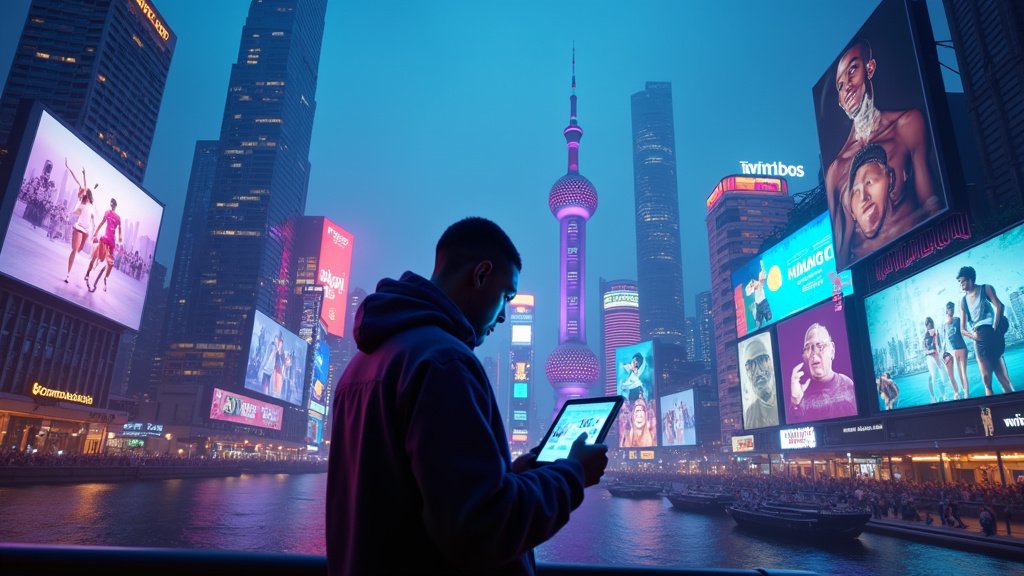As the film industry grapples with its environmental footprint—from jet-setting crews to single-use plastic on set—2025 has become a watershed year for sustainable production. Major studios, indie filmmakers, and streaming platforms alike are embracing “green” initiatives, aiming to cut carbon emissions, reduce waste, and champion eco-friendly workflows without sacrificing creativity or quality. Here’s how productions are turning green screens into green sets and what it means for the future of moviemaking.
1. Solar-Powered Soundstages and LED Volumes
- On-Site Renewable Energy: Large studios install rooftop solar arrays and microgrid systems to power soundstages, offices, and equipment trucks. Universal Studios’ new “Solar Stage” in Los Angeles generates up to 1 MW of clean energy, offsetting traditional grid usage and lowering utility costs.
- Energy-Efficient LED Volumes: Virtual-production stages (like those used on The Mandalorian) leverage high-efficiency LED panels instead of gas-guzzling generators. LED volumes consume 40 percent less energy than conventional lighting rigs, while delivering superior color accuracy and integrated environmental effects—all in one controlled footprint.
2. Sustainable Set Construction and Materials
- Reusable Scenery & Modular Design: Instead of building bespoke sets for each project, studios adopt modular “kit” sets—interchangeable wall units, flooring panels, and prop elements that can be reconfigured and redressed across multiple films and series. This reduces timber and foam usage by up to 60 percent.
- Recycled and Biodegradable Materials: When custom builds are necessary, materials such as reclaimed wood, recycled steel, and biodegradable plastics (PLA, wheat-starch composites) replace virgin lumber and Styrofoam. Set-decor houses stock eco-certified fabrics and low-VOC paints to minimize chemical off-gassing.
3. Zero-Waste Catering and Craft Services
- Compostable Serveware: Plates, utensils, and cups made from bagasse (sugarcane pulp) or bamboo replace single-use plastics. Dedicated compost bins—cleared daily by local waste-management partners—ensure food scraps and packaging never reach landfills.
- Local, Seasonal Menus: Craft services source ingredients from local farms and co-ops, reducing “food miles” and supporting regional agriculture. Menus rotate seasonally, minimizing reliance on greenhouse-gas-intensive imports and offering fresher, more nutritious options for crews.
4. Carbon-Neutral Transportation and Logistics
- Electric and Hybrid Vehicle Fleets: Studios transition grip trucks, wardrobe vans, and shuttle buses to electric or hybrid models. Los Angeles location-service companies now include EV charging rigs and hydrogen-fuel-cell generators to power remote shoots without diesel fumes.
- Offsetting and In-Practice Reduction: Productions audit travel and transport emissions using carbon-calculator tools, then purchase verified carbon credits for unavoidable flights. Better yet, many opt for virtual location scouting—utilizing satellite imagery and 3D scans—to reduce scouting trips by up to 70 percent.
5. Digital Dailies and Paperless Workflows
- Cloud-Based Review Systems: Instead of printing call sheets, dailies, and scripts, productions use secure cloud platforms (Avid MediaCentral, ShotHub) for digital distribution. GPS-tagged call times and interactive schedules in mobile apps cut paper use by thousands of pages per shoot.
- Interactive Storyboards and Previs: Virtual and augmented-reality storyboard tools allow directors to “walk through” scenes in VR before physical sets are built—reducing wasted construction and enabling more precise resource planning.
6. Water Conservation and Wastewater Management
- On-Set Water Stations: Refillable water dispensers and branded stainless-steel bottles eliminate plastic bottle waste. Biodegradable hand-soap stations and microfiber towels replace single-use paper towels in craft and hair/makeup trailers.
- Greywater Recycling: Large studio lots incorporate greywater systems to capture sink and shower runoff—filtering it for use in landscape irrigation, dust suppression on dirt roads, and set-piece water effects.
7. Crew Education and Green Production Certification
- Eco-Concierge and Sustainability Officers: Productions designate “green captains” responsible for overseeing waste sorting, energy audits, and crew training. These officers ensure compliance with studio environmental policies and government regulations.
- Green Production Certification: Organizations like the PGA’s Green Production Guide and Albert (UK) offer certification programs that rate a production’s sustainability across dozens of metrics—ranging from catering to transport—granting “Green Seal” badges that bolster marketing and investor appeal.
8. Challenges and Innovations Ahead
- Budgeting and Perception: Initial investments in sustainable tech (solar panels, EVs) can strain indie-film budgets. However, long-term savings on energy and waste disposal often offset these costs within a single production cycle.
- Scale and Access: While major studios lead the charge, smaller productions may lack access to green infrastructure. Renting eco-friendly gear, partnering with local clean-tech providers, and sharing resources through regional co-ops can democratize sustainability.
- Continuous Improvement: As industry standards evolve, productions must stay agile—adopting emerging materials (e.g., mushroom-based insulation), exploring closed-loop set furniture rentals, and integrating AI-driven waste-reduction analytics into pre-production planning.
Conclusion
Sustainable filmmaking in 2025 isn’t a marketing gimmick—it’s an operational imperative that aligns ecological responsibility with creative innovation. By harnessing renewable energy, rethinking materials, and embedding green practices across transportation, catering, and digital workflows, the industry is crafting a roadmap for low-impact production without compromising artistic vision. As audiences grow increasingly eco-conscious, green-certified films and series will stand out—and so will the studios and creators who pioneer them. In the reel world and beyond, the future of moviemaking is unmistakably—and indispensably—green.





